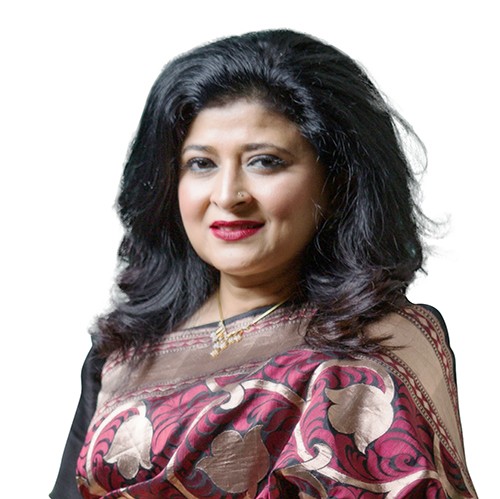A mutual fund is a professionally managed fund that pools money from investors, including individuals and institutions, and invests them collectively into various types of assets including stocks, bonds and/or money market instruments. The prevalent form of mutual fund structure used around the world is the Open-End Mutual Fund of unlimited size and tenor. Mutual funds invest in many different Financial Assets enabling small-scale investors to diversify investment risk. A mutual fund also benefits directly from the resources of its asset manager that conducts research, analysis and due diligence on potential and existing portfolio investments of the mutual fund.
Mutual funds have various objectives with corresponding investment mandates, such as Growth Funds, value funds, money market funds, fixed income funds, alternative investment funds and hybrid funds. Growth Funds predominantly invest in equity Securities with the objective of capital appreciation.
An open-end mutual fund is a type of investment where there is no set maturity period. Investors can purchase or sell units of the fund through the asset manager, and there are no limits on the number of Units the fund can issue.
On the other hand, a closed-end mutual fund has a predetermined maturity period and a set number of Units that are issued during its launch. Investors can participate in the fund during the initial public offering (IPO), but after that, they can only buy and sell units of the fund through stock exchanges.
While there is no guaranteed percentage of return, mutual funds have shown empirically to generate higher returns than all other asset classes over the long term.
Sponsor: In the structure of a mutual fund, the sponsor initiates the fund by subscribing to at least 10% of the total fund size and appointing the trustee, asset management company, and custodian.
Trustees: The board of trustees is an independent body licensed by the regulator, responsible for safeguarding the interests of the Unit Holders, and not affiliated with the sponsor or asset management company.
Custodian: The custodian, also licensed by the regulator, is responsible for the physical handling and safekeeping of the assets managed by the asset management company and operates independently of the sponsor and asset management company.
Asset Management Company (AMC): The asset management company, responsible for launching and managing the mutual funds in compliance with Bangladesh Securities and Exchange Commission regulations, follows the guidelines set forth by the trustee.
The Net Asset Value (NAV) of a mutual fund shall be equal to the fair value of assets minus the fair value of liabilities of the Fund. NAV per Unit shall be calculated by dividing the NAV of the fund by the number of Units outstanding at the measurement date. The NAV of GDD EBCGF will be calculated by GDDA on behalf of the Fund at the close of Business Hours on each Trading Day.
The below formula is used to determine the Fund’s per Unit NAV:
Total NAV of the fund = Value of Assets – Value of Liabilities
NAV per Unit = Total NAV of the fund / No. of Units outstanding
NAV of a fund can fluctuate depending on changes in the market value of the assets held by the fund. If the market value of the assets decreases significantly, there is a possibility that the NAV could fall below the face value of the fund.
A front-end load is a commission fee that is charged at the time of purchasing units in a mutual fund, and is deducted from the total investment amount. It is worth noting that mutual funds offered by GDDA do not have a front-end load.
The term used to describe the fee charged to a Unit Holder when Units from a mutual fund are sold is known as a back-end load or exit load. It represents a discount or charge applied below the NAV (net asset value) of the mutual fund Units being redeemed and is intended to discourage Unit Holders from withdrawing their investments before a specified period has elapsed. Other than potential exit load associated with SIP investing, GDD EBCGF bears no exit load.
Mutual funds are open to investment from both individuals (either singly or jointly) and institutions, whether they are local or foreign. Additionally, other mutual funds and collective investment schemes are also able to invest in mutual funds. This allows for a diverse range of investors with varying investment goals and risk appetites to participate in any mutual fund.
GDD EBCGF may invest moneys collected only in Securities listed or to be listed with a stock exchange, and money market instruments including Government Securities. Not less than 50% (fifty percent) and not more than 90% (ninety percent) of total assets of the GDD EBCGF shall be invested in listed Securities. Investments in listed Government Securities shall be excluded from this condition. The specific composition of its portfolio will be disclosed on a monthly basis to provide transparency and accountability to Unit Holders and potential investors..
Two types of returns any Unit Holder can get from investing in mutual fund:
- Capital Gain
- Dividend
Investors have options for submitting their investment in Green Delta Dragon. They can submit payment by cheque, pay order, or demand draft to the office of Green Delta Dragon or any selling agent appointed by the Asset Management Company. Alternatively, investors can directly deposit or use BEFTN to transfer the funds to the designated bank account of the mutual fund. By offering multiple payment options, Green Delta Dragon aims to provide convenience and flexibility to its investors.
Yes, it is mandatory to have a BO account as Units of the mutual fund will be credited to the designated BO account of the Unit Holder.
No, there is no lock-in period for GDD EBCGF.
The price at which an investor can purchase one Unit of an GDD EBCGF is referred to as the investor’s purchase price.
Bid Price refers to the GDD EBCGF repurchase price per Unit provided to Unit Holders. The Asset Manager, on behalf of GDD EBCGF, will calculate GDD EBCGF’s Holder sale price) per Unit (Bid Price) at the beginning of each new Trading Day, with the Offer Price being the NAV per Unit at fair value as calculated per clause 3.8 of this Prospectus at the close of Business Hours on the preceding Trading Day. GDD EBCGF Offer Price and Bid Prices shall be published on the website of the Fund (www.greendeltadragon.com/EBCGF), GDDA and through authorized Selling Agents as prescribed in the Rules.
Yes, investors have the option to purchase Units of a mutual fund after the IPO (Initial Public Offering) has closed. However, there is a difference in the purchase price during and after the IPO. During the IPO, investors can purchase units at face value, which is typically BDT 10. After the IPO of GDD EBCGF, investors can purchase units at the Green Delta Dragon’s bid price, which is based on the NAV (Net Asset Value) of the fund.
After the sale of the Units, the sale proceeds will be credited to the Unit Holder’s bank account within five (5) working days, provided that the DP40 report is available from the respective Broker. To complete the Sale Procedure, the Unitholder must submit the Surrender Form to the Asset Manager and the CDBL Transfer Form to the designated Broker House.
When an investor submits the “Purchase Form” along with the cheque, an acknowledgement slip will be provided. After the units are credited to the BO account of the Unit Holder, a “Confirmation of Unit Allocation” will be issued to the Unit Holder. Additionally, all investors of mutual funds managed by GDDA will have access to a Unit Allocation Certificate on the digital platform.
Mutual funds are typically considered as long-term investments, although the length of investment can vary depending on the investor’s goals and objectives. ]
Units will be allotted to investors after the invested amount is realized and the NAV of the Units is determined, considering any applicable load structure. The units will be allotted in fractions up to 3 decimals.
Individuals, whether applying for or holding units singly or jointly, have the option to make nominations.
For GDD EBCGF, the Net Asset Value (NAV) of the mutual fund shall be calculated every business day in compliance with the guidelines set by the Bangladesh Securities and Exchange Commission (BSEC). GDD EBCGF is the first mutual fund in Bangladesh to report Daily NAV. The NAV, along with the Offer (investors’ purchase price) and Bid(Unit Holder’s sale price) prices, will be displayed and available for public access at the corporate office and website. Additionally, the NAV, Offer and Bid prices will be published in at least two daily newspapers on all business days in accordance with BSEC guidelines.
Unit Holders may sale their entire holdings either in full or in part. Unit Holders have the option to request redemption of a specified number of Units of GDD EBCGF. The sale amount payable will be the number of Units multiplied by the applicable Offer price in BDT. If the request for saleexceeds the total holdings of the Unit Holder, the account of the Unit Holder will be closed, and the entire holding to the Unit Holder’s credit will be sold at the applicable Bid price.
Partial Sale is allowed without any additional cost subject to minimum sale quantity is 500 (five hundred) units for individuals and 5,000 (five thousand) units for institutions. Upon partial sale, the unit holder will be issued with a new Confirmation of Unit Allocation representing the balance of her/his unit holding.
Sale of the Units must be done by transferring Units from Unit Holder’s BO Account to GDD EBCGF’s designated BO Account. The DP40 report shall have to be submitted to the Green Delta Dragon Asset Management Company Ltd. /Selling Agent for confirming the sale of units. Units can be sold on all business days except the book closure periods of GDD EBCGF.
In Bangladesh, investments in specific mutual funds may qualify for tax benefits as per the guidelines set by the National Board of Revenue (NBR). The tax benefits and provisions may vary, mutual funds and investors are advised to refer to the respective offer documents and NBR guidelines for more information.



























